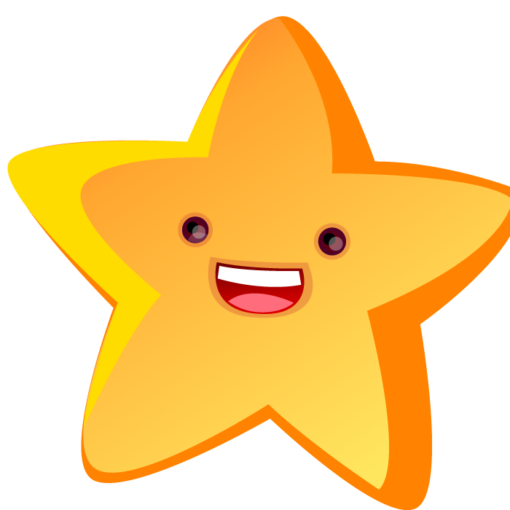We like the following songs because they engage the children with simple melodies and story lines, include repetitive action, and ultimately help children build their attention span. (material c. 2011, Youth Services)
Polly Put the Kettle On
Polly Put the Kettle On (song with simple, repetitive gesture)
Polly, put the kettle on, (move a pretend kettle onto the stove)
Polly, put the kettle on, (repeat motion)
Polly, put the kettle on, we’ll all have tea. (repeat motion and pretend to sip tea)
Sukey, take it off again, (move pretend kettle off of stove – just the opposite of the motion in verse 1)
Sukey, take it off again, (repeat)
Sukey, take it off again, they’ve all gone away. (repeat motion and wave goodbye)
“Bye!”(continue to wave) Why it works: Repetitive motions and simple story line engage the child while the musical tune provides a change of pace. Children are attracted by the singing.
Five Little Ducks (song with dramatic action)
Five little ducks that I once knew, (hold up five fingers)
Fat ones, skinny ones, fair ones, too. (move hands wide apart, close together, and end with a flourish)
But the one little duck with the feather on its back, (hold up one finger)
He ruled the others with his, “Quack! Quack! Quack!” (open and close fingers and thumb on one hand like a duck)
“Quack! Quack! Quack!” “Quack! Quack! Quack!” (continue opening and closing fingers like a duck quacking)
He ruled the others with his, “Quack! Quack! Quack!”
Down to the river they would go, (palms together, make swooping motion downward)
Wibble-wobble, wibble-wobble, to and fro, (palms together, wiggle palms and hips side to side)
But the one little duck with the feather on its back, (hold up one finger)
He ruled the others with his, “Quack! Quack! Quack!” (open and close fingers and thumb on one hand like a duck)
“Quack! Quack! Quack!” “Quack! Quack! Quack!” (continue opening and closing fingers like a duck quacking)
He ruled the others with his, “Quack! Quack! Quack!”
Why it works: The actions involve the entire body, the story line is simple and familiar, there is a sense of power and authority in identifying with the one little duck with the feather on its back and the camaraderie of the group of five ducklings to offset that.
Hickory Dickory Dock
Tick, tock, tick, tock, tick, tock, tick, tock (sway side to side as the clock ticks and tocks)
Hickory dickory dock, (continue swaying side to side)
The mouse ran up the clock, (move fingers or toy mouse up your body)
The clock struck one, (hold up one finger)
And down he run, (move fingers or toy mouse down)
Hickory dickory dock. (sway side to side again)
Tick, tock, tick, tock, tick, tock – shhhhh! (continue swaying and put fingers to lips)
Why it works: The whole body is used when the children become the ticking clock. This rhyme is great for bringing a sense of calmness to the group and the quiet “Shhhh!” at the end leaves the group ready to listen. This is our favorite rhyme to do just before the story book is read. “And now we’re ready for a story.”
Eency Weensy Spider (song with action)
The eency weency spider went up the water spout, (use fingers and thumb to “walk” hands up in front of you)
Down came the rain and washed the spider out, (flutter fingers down and out to the sides)
Out came the sun and dried up all the rain, (raise hands out at sides to meet above your head)
And the eency weency spider went up the spout again. (repeat action for first line)
Why it works: This simple story engages the child’s imagination with the familiar (spider, rain, sun) and the unfamiliar (the water spout). There is drama when the spider fails (as children so often do when they are learning) and satisfaction when the spider is successful (giving the child hope and encouragement to try again). The accompanying actions involve the child’s total upper body.
Clap Your Hands (song with action)
Clap, clap, clap your hands
As slowly as you can, (stretch arms out wide and clap extremely slowly)
Clap, clap, clap your hands
As quickly as you can! (clap as quickly as possible)
Repeat verse with “roll your hands,” “rub your hands,” “shake your hands,” and end with a repeat of “clap your hands.”
(Alternate: During the “rub your hands” verse, add a bar of pretend soap and wash palms, between fingers, backs, etc., then sing the “shake your hands” verse to pretend to dry them).
Why it works: The suspense of drawing out the clapping as long as possible is contrasted with the excitement of speed and the slight uncertainty of “when” the speed will increase. These variations in timing help keep the child focused on the leader.
Pop Goes the Weasel
All around the cobbler’s bench, the monkey chased the weasel. (crouch down as small as possible)
That’s the way the money goes, Pop! Goes the weasel! (pop up)
A penny for a spool of thread, a penny for a needle, (dance side to side waving hands in the air)
That’s the way the money goes, (crouch down small again)
Pop! Goes the weasel! (pop up)
Why it works: This involves the child’s whole body. There is the added excitement of “hiding” when crouched and the “surprise” explosion of activity when it’s time to pop up, with both actions repeated. Alternate: Vary the dynamics by singing very quietly during the hiding times and loudly when popped up.



